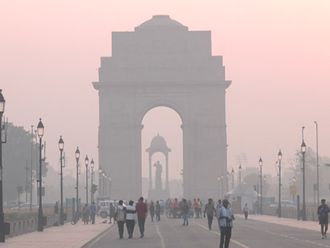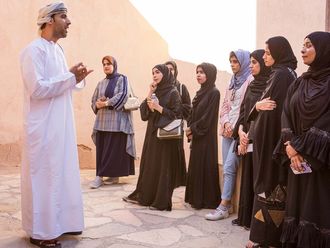
On September 30, Yemen announced that a Hellfire missile fired from a CIA-operated drone had killed Anwar Al Awlaki, in the north of the country. His grief-stricken father, once a minister of agriculture in a Yemeni government, went to the scene to collect and bury the pieces of what remained of Al Awlaki’s body. It was the seventh US strike in Yemen this year.
Anwar Al Awlaki was a virulent critic of American foreign policy in the Arab world, and a passionate advocate of Al Qaida’s form of Islamic jihad. He was also a US citizen, born in New Mexico, with an engineering degree from Colorado State University. His internet sermons, delivered in fluent English, had a devoted following, especially among young Muslims in the West.
His killing inevitably aroused a storm of controversy in the US about its legality. In an article in The National Interest, Paul R Pillar, a former senior CIA officer now a university professor, described it as “essentially a long-range execution without judge, jury or publicly presented evidence.” This is a subject which must be left to the Americans to debate.
What are its probable consequences? The most obvious is that it is likely further to inflame some Muslims against the US, drawing fresh recruits into militancy. “Why kill him in this brutal, ugly way?’ a member of his Awalik tribe was quoted as saying. “Killing him will not solve the Americans’ problem with Al Qaida. It will just increase its strength and sympathy in this region.”
A key question, therefore, is whether Al Qaida — including its Yemen-based offshoot, ‘Al-Qaida in the Arabian Peninsula’ — is an organisation or a cause. If it is an organisation, killing its leaders must eventually drive it out of business. But if it is a cause, assassinations may have the contrary effect. A ‘martyred’, Al Awlaki may prove a more effective recruiting sergeant than he was alive. A young American Muslim cleric, Yasir Qadi, wrote in the International Herald Tribune on October 3 that “Killing people does not make their ideas go away.”
Al Awlaki’s killing has inevitably been compared to that of Osama Bin Laden, shot down last May in his home in Pakistan by a hit-team of US Special Forces. The clandestine mission was seen by many Pakistanis as an intolerable infringement of their country’s sovereignty. The assassination precipitated a grave crisis in US-Pakistan relations. It played into the hands of hard-liners in the Pakistani army and military intelligence service, no doubt causing them to tighten still further their links with jihadi groups, such as the Haqqani network. America’s 10-year war against the Taleban in Afghanistan will thus have been made more perilous and any outcome favourable to the US more uncertain than ever.
In much the same way as he cheered Bin Laden’s death, US President Barack Obama has hailed Al Awlaki’s murder as a major blow to Al Qaida. Many Muslims, however, will see the killing as further evidence that the American president, much like his belligerent predecessor George W Bush, is at war with Islam. His slavish support for Israel as it seizes Palestinian land and denies statehood to the Palestinians has aroused great anger. His standing is already close to rock-bottom in the Arab and Muslim world. The killing of Al Awlaki will drive another nail in the coffin of what little remains of his reputation.
In an ironic twist of fortune, Dick Cheney, Bush’s war-mongering Defence Secretary, said last weekend that Obama should apologise to Bush for criticising the ‘enhanced interrogation techniques’ — such as water-boarding — inflicted on Al Qaida suspects, since Obama was himself now resorting to even more robust methods!
The US is deeply unpopular in Yemen. The divide can be traced to the American-sponsored war against the Soviets in Afghanistan in the 1980s. It will be recalled that, with the help of Pakistan and Saudi Arabia, the US recruited, trained and armed tens of thousands of young Muslims from several Arab countries to fight the Russians in Afghanistan. Some 25,000 of these mujahideen — volunteer fighters in the cause of Islam — came from Yemen alone. Many thousands more came from Algeria, Egypt and elsewhere.
But when the Soviets pulled out of Afghanistan in 1989, the US callously dropped the mujahideen. Funding for them dried up. A number of these battle-hardened and radicalised ‘Afghan Arabs’ joined Bin Laden’s Al Qaida. Thousands made their way home to Yemen, where they were treated as heroes — at least at first. Some were given jobs in the civil service and the army.
A year later, in 1990, Saddam Hussain invaded Kuwait. To dislodge him, the US despatched half a million men to Saudi Arabia in what was to become the First Gulf War. Since Yemen had long had close ties with Saddam’s Iraq, President Ali Abdullah Saleh refused to join the American-led coalition. Instead, he advocated an ‘Arab solution’ to the Kuwait crisis. This angered Saudi Arabia and the Gulf States who saw Saddam as a dangerous bully who had to be cut down to size — a task they believed only the US could do.
Saudi Arabia’s response to Saleh’s pro-Iraqi policies was to expel close to a million Yemeni migrant workers. Their return home deprived Yemen of indispensable remittances and added to already severe unemployment. Yemen became a ‘failing’ state. This was the beginning of a long dispute between Yemen and Saudi Arabia — and also of a battle between militants and the US, which continues to this day.
At first, the ‘Afghan Arabs’ were useful to Yemen’s president as he battled former Marxists in South Yemen. But when the militants started attacking American targets, they got him into trouble with the US. The former heroes became terrorists.
In December 1992, militants bombed the Goldmur Hotel in Aden where US military personnel were staying. In June 1996 they bombed the Khobar Towers in the eastern Saudi town of Dhahran, killing 19 American soldiers. In August 1998, they attacked US embassies in Kenya and Tanzania. In October 2,000, they blew a hole in the side of the USS Cole in Aden harbour killing 17 US sailors. In November 2002, a missile from a CIA-operated drone killed Shaikh Salim Al Harithi, one of the men involved in the Cole bombing.
By this time, the exploits of these local militants had been overshadowed by the devastating assault mounted by their mother organisation on the US heartland — the terrorist attacks of September 11, 2001. The US wars in Afghanistan and Iraq followed.
Meanwhile, the bitter struggle continues in Yemen, a country now on the verge of collapse. US Special Forces are being sucked further into what looks increasingly like a civil war. The killing of Anwar Al Awlaki must be seen in this context.
But is it not obvious that external force is a blunt instrument in dealing with what is essentially an internal Yemeni contest? Is it not time for Washington to rethink its policy towards the Arab and Muslim world — as the unfortunate Obama had indeed intended to do, before he was defeated by America’s gung-ho militarists, rabid conservatives, pro-Israeli lobbyists and other assorted Islam-haters?
Patrick Seale is a commentator and author of several books on Middle East affairs such as Asad of Syria: The Struggle for the Middle East and Abu Nidal: A Gun for Hire.











